The way we shop for fashion has changed completely. What once were simple online catalogues are now interactive platforms where people browse, compare, and buy everything from sneakers to jackets in just a few clicks. Still, one thing is missing: the personal touch of in-store shopping. Static product pages, endless scrolling, and trying to picture how something will actually look or fit can make online shopping for fashion feel impersonal. That often leads to hesitation, cart abandonment, and returns.
This is where fashion product configurators come in. They are more than just a trend. These tools let shoppers personalize products in real time, choose colors, swap materials, add details, and see the results instantly. It brings a custom feel to the online experience, transforming the traditional e-commerce journey into something dynamic. For businesses seeking to implement this level of personalization, ecommerce store development plays a critical role in building and supporting the back-end architecture.
In this guide, we’ll look at how product configurators work, share examples of brands using them effectively, and explain why they are becoming essential in fashion retail. If your goal is to improve customer experience, build loyalty, and increase conversions, this is a tool worth exploring.
The Unstoppable Rise of Personalization in Fashion
Before diving into the mechanics of configurators, it's crucial to understand the ground on which they thrive: the growing consumer demand for personalized fashion experiences.
The Backlash Against Fast Fashion
While fast fashion continues to dominate, a growing counter-movement is taking shape. Consumers are now prioritizing longevity, quality, and meaning in their purchases. Fashion customization tools provide an opportunity to create unique items that are valued and cherished longer, shifting away from the disposable mindset.
The "Experience Economy"
Modern consumers, particularly Millennials and Gen Z, often value experiences over possessions. The act of designing or customizing a product becomes an experience in itself. It’s engaging, memorable, and shareable. It allows them to express their individuality and creativity, making the purchase not just a transaction, but a personal journey.
The Desire for Self-Expression
Fashion has always been a way to express who we are. Personalized fashion takes this further, giving people the chance to create items that truly reflect their style, personality, and values, like choosing sustainable materials. It’s not just about looking good; it’s about feeling good in what you wear.
The Influence of Social Media
Platforms like Instagram and Pinterest highlight personalized styles and unique products. Consumers see this and want the same. They’re looking to create and share something that reflects their own style. The power of social media marketing helps to drive demand for customizable fashion products.
The Limitations of Mass Production
While efficient, mass production often means compromises in fit, color, or specific features. Fashion configurators directly address the sentiment, "I love this, but I wish it came in blue," or "If only this sleeve style were different."
Traditional e-commerce struggles to fully meet these personalization demands. Filter options help narrow choices, but they don't allow for the creation of something truly new or specifically tailored. This is where product configurators step in. They transform passive browsing into active creation, enabling real-time fashion customization.
What Exactly is a Fashion Product Configurator? Unpacking the Definition
At its core, a fashion product configurator is an interactive software tool. E-commerce websites or apps typically integrate it to let customers customize a product using predefined options and rules. Customers can visualize the changes in real time before they make a purchase.
Think of it as a digital design studio accessible to every customer. Instead of just viewing static images of pre-made variations, the user actively participates in determining the final look and specifications of their item.
For instance, a fashion retailer’s online transformation for a global audience can leverage such configurators to engage customers more effectively by offering a personalized shopping experience. You can explore how one retailer successfully used these tools to increase their global reach in our detailed case study on their online transformation: Fashion Retailer’s Online Transformation for Global Reach.
Key Components of a Typical Fashion Configurator
User Interface (UI)
This is what the customer sees and interacts with. It needs to be intuitive, visually appealing, and easy to navigate. Key elements include:
- The product visual: Often 2D images, but increasingly high-fidelity 3D models.
- Option selectors: Buttons, swatches, dropdowns, sliders for colors, materials, components, embellishments, etc.
- Real-time pricing updates: Keeping costs transparent as options change.
- Advanced viewing controls: Zoom, rotate, and multiple angle views, especially for 3D models.
- Save and share features: Allowing users to revisit or showcase their custom designs.
- "Add to Cart" button that captures the unique configuration.
Visualization Engine
This is the heart of the visual experience. It takes the user's selections and renders the product accordingly. Technologies range from:
- 2D Image Composition: Layering pre-rendered images of different components/colors. Simpler and faster to implement, but can look less realistic or offer limited angles.
- 3D Rendering: Using detailed 3D models of the product and its customizable parts. Offers photorealistic views, 360-degree rotation, zoom, and a much more immersive experience. This is rapidly becoming the standard for sophisticated configurators.
- Augmented Reality (AR): Some advanced configurators allow users to project the customized 3D model into their own environment using their smartphone camera, offering a virtual "try-before-you-buy" experience.
Product Logic & Rules Engine
This backend component defines what can be customized and how. It enforces constraints based on design principles, manufacturing limitations, or inventory availability. Examples:
- A specific type of embroidery might only be available on certain fabrics.
- A particular sole color might not be compatible with a specific upper material for a shoe.
- Certain premium options might only unlock after a base style is chosen.
It ensures that users can only create valid, manufacturable product combinations, enhancing the custom fashion shopping experience.
How Fashion Product Configurators Work: Behind the Digital Curtain
Let's trace the journey, both from the customer's perspective and the underlying technical processes:
The Customer Journey
1. Product Selection: The customer navigates to a product page featuring a customizable item (e.g., a handbag, a jacket, a pair of sneakers).
2. Initiating Configuration: They click a "Customize" or "Design Your Own" button. This will launch the configurator interface.
3. Exploring Options: The customer sees the base product visually. Options for customization (e.g., body color, trim color, hardware finish, monogramming) are presented clearly.
4. Making Selections: As the customer clicks on different swatches or options, the visualization engine instantly updates the product image or 3D model to reflect their choices.
5. Real-time Visualization: They can zoom in, rotate the model (if 3D), and see exactly how their unique combination looks from multiple angles. The price often updates dynamically based on selected options.
6. Refinement: The customer can easily go back and change selections, experimenting until they achieve their desired look.
7. Review & Confirmation: Once satisfied, they review their final design and the associated price.
8. Adding to Cart: Clicking "Add to Cart" captures all the specific configuration details and adds the unique item to their shopping basket for checkout.
To ensure a smooth and efficient configurator experience, integrating the configurator with your broader digital commerce solution is essential. This integration ensures that customer data, order details, and product customizations are streamlined. If you're looking to enhance your digital commerce strategy, our blog on Generate More Online Sales with an Integrated Digital Commerce Solution provides actionable insights on how integrated systems drive revenue.
The Technical Workflow (Simplified)
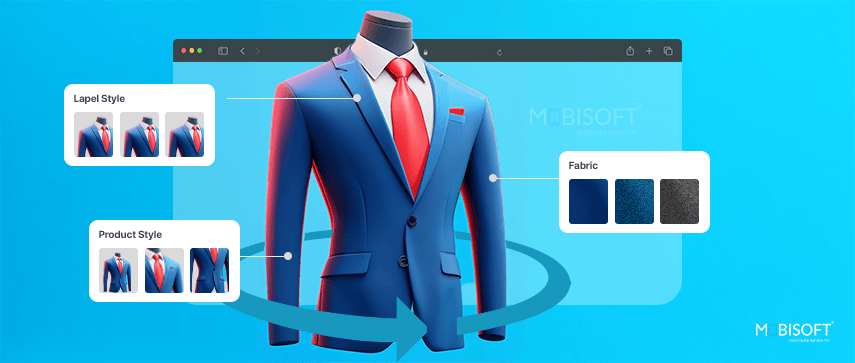
1. Asset Preparation: The brand creates high-quality digital assets for the base product and every single customizable component. For 3D configurators, this involves creating detailed 3D models and realistic texture maps for all materials and finishes.
2. Rule Definition: The brand defines the logic in the rules engine. Which components can be swapped? What are the color/material compatibilities? Are there premium tiers? What are the pricing adjustments for each choice?
3. User Interaction & Selection: The frontend UI captures the user's clicks or selections.
4. Logic Processing: The selection is sent to the rules engine, which validates the choice against the predefined rules.
5. Visualization Update: If the choice is valid, the rules engine instructs the visualization engine to update the render. In 3D, this might involve swapping material shaders, replacing component models, or applying decals (like monograms).
6. Data Compilation: As selections are made, the system keeps track of the chosen options.
7. Cart Integration: When the user adds the item to the cart, the system bundles the configuration data (e.g., base model ID + list of selected options/materials/colors) and generates a unique identifier or a detailed description for the order line item. This often involves creating a dynamic or "virtual" SKU.
8. Order Transmission: Upon checkout completion, the detailed configuration data is passed from the e-commerce platform to the ERP or MES, providing the necessary instructions for the manufacturing or fulfillment team to produce the specific, custom item accurately.
Types of Fashion Product Configurators: From Simple Swaps to Bespoke Creations
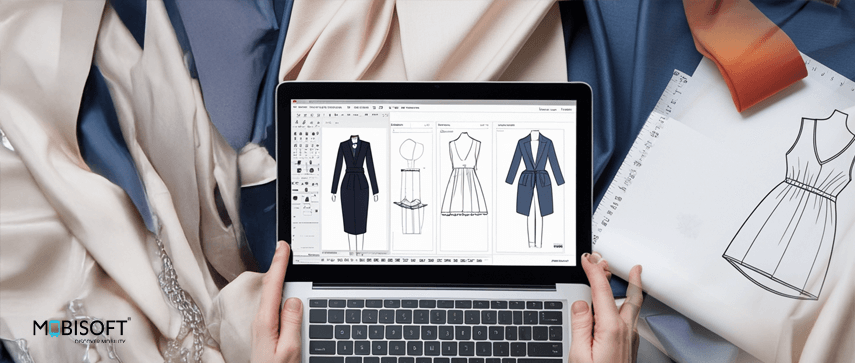
Not all fashion product configurators are created equal. They exist on a spectrum of complexity and capability:
Simple Color/Material Swappers:
- Functionality: Allows users to change the color or fabric of a main product body or key predefined sections.
- Technology: Often uses 2D image composition or basic 3D model texture swapping.
- Examples: Changing the color of a t-shirt, selecting from different leather finishes for a wallet.
- Pros: Relatively easy and cost-effective to implement.
- Cons: Limited customization depth.
Component-Based Configurators:
- Functionality: Enables users to mix and match different physical parts of a product.
- Technology: Typically requires 3D modeling to ensure components fit together visually and logically.
- Examples: Designing sneakers (selecting upper, sole, laces, heel tab), configuring a modular bag (choosing body, flap, strap), customizing watch components (case, bezel, strap, dial).
- Pros: Offers a greater sense of creation and uniqueness.
- Cons: More complex asset creation and rule definition.
Made-to-Measure (MTM) Configurators:
- Functionality: Incorporates customer measurements to tailor the fit of the garment alongside aesthetic customizations. Users might input measurements directly, select from standard size adjustments, or even use webcam/smartphone body scanning technology (though the latter is still emerging).
- Technology: Requires sophisticated logic to adjust patterns based on measurements, often integrated tightly with CAD systems. Visualization might show a standard model or attempt to approximate the fit on a generic avatar.
- Examples: Custom suits (Indochino), tailored shirts, and custom-fit dresses.
- Pros: Addresses a major online apparel fit pain point, and significantly reduces return rates due to poor fit.
- Cons: Complex implementation, requires robust measurement input/validation, the production process must support individual pattern adjustments.
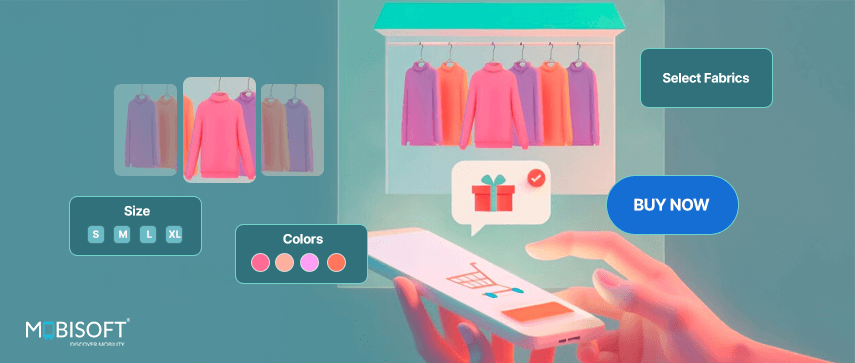
Full Customization/Bespoke Simulators:
- Functionality: Offers a very high degree of freedom, allowing customization of fine details like stitching color, button styles, lining patterns, monogram fonts/placement, collar/cuff styles, etc
- Technology: Almost always relies on high-fidelity 3D rendering and a complex rules engine.
- Examples: High-end customizable handbags, bespoke footwear, detailed outerwear customization.
- Pros: Provides the ultimate personalized experience, caters to discerning customers, and justifies premium pricing.
- Cons: Highest complexity and cost to develop and maintain, requires significant investment in 3D assets.
Visualizers with AR Try-On:
- Functionality: Integrates Augmented Reality (AR), allowing users to overlay the 3D model of their customized product onto their own body via their device's camera or place it in their environment.
- Technology: Combines 3D configuration with AR frameworks (like ARKit or ARCore).
- Examples: Virtually trying on customized sneakers, visualizing a custom handbag with an outfit.
- Pros: Highly engaging, bridges the gap between online visualization and real-world context, boosts purchase confidence.
- Cons: Requires robust 3D assets, AR performance can vary by device, and accuracy of virtual try-on for apparel fit is still evolving.
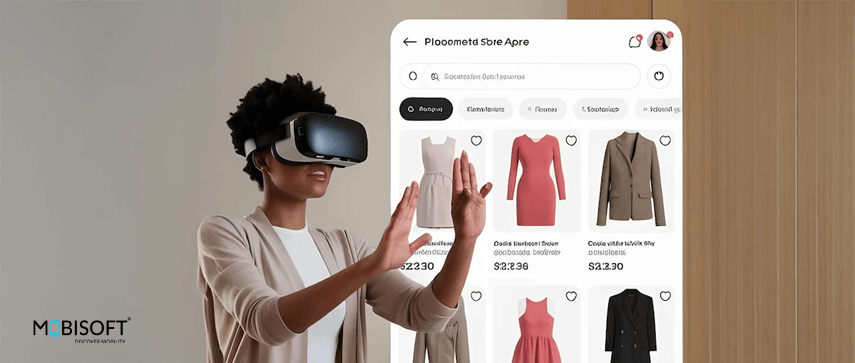
Real-World Examples: Fashion Brands Embracing Configuration
Many forward-thinking brands are already reaping the benefits of product configurators.
Nike By You (Formerly NikeiD):
- Product: Primarily sneakers (Air Force 1, Air Max, etc.), some apparel.
- Type: Component-based and color/material swapper with some text personalization.
- Impact: A long-standing benchmark in product customization. Nike By You drives significant engagement, allows Nike to test new colorways and material combinations, fosters a strong sense of brand loyalty, and commands a premium price over standard models. It turns shoe buying into a creative process.
Adidas (mi adidas / Creative Studio):
- Product: Sneakers and some apparel.
- Type: Similar to Nike By You, focusing on color, material, and component swapping, plus personalization like names or flags.
- Impact: Competes directly with Nike in the customization space, offering athletes and fans the chance to create unique gear, often tied to teams or specific events, enhancing brand connection.
Ralph Lauren (Custom Shop):
- Product: Iconic Polo shirts, sweaters, hats, etc.
- Type: Color swapper with options for adding monograms, logos (like flags or custom text).
- Impact: Allows customers to personalize a classic item, making it uniquely theirs. It elevates the perceived value of a staple product and provides a strong gifting option. The interface is clean and focuses on visualizing color and logo placement accurately.
Indochino:
- Product: Men's suits, shirts, outerwear.
- Type: Made-to-Measure (MTM) configurator combined with aesthetic customization.
- Impact: Built its entire business model around custom-fit apparel online. Customers input measurements (guided by online tutorials) and then customize fabric, lining, lapel style, buttons, monograms, etc. This directly tackles the fit issue, reducing returns and building trust for high-ticket items purchased online.
UNDONE Watches:
- Product: Watches.
- Type: Component-based configurator.
- Impact: Allows users to select case finishes, bezel styles, dials, hands, and straps, and add custom text or images to the caseback or dial. This high level of personalization in a traditionally conservative market segment differentiates them significantly and appeals to enthusiasts wanting a unique timepiece without a bespoke luxury price tag.
Bags of Love / Contrado (Print-on-Demand):
- Product: Wide range of apparel, accessories, homewares.
- Type: Primarily surface design configurators. Users upload their own images or designs to be printed on base products.
- Impact: Empowers creators and consumers to design truly unique items. While different from component swapping, it's another form of powerful personalization facilitated by a configurator interface.
Smaller Bespoke Brands (e.g., Adelante Shoe Co., Awl & Sundry):
- Product: Shoes, boots.
- Type: Often sophisticated MTM and component/material configurators.
- Impact: Enables smaller players to offer a level of customization previously reserved for traditional artisans, competing on personalization rather than scale. They build direct relationships with customers involved in the creation process.
These examples highlight the versatility of configurators across different product types and price points, demonstrating their broad applicability within the fashion industry.
When implementing a fashion configurator, it's important to integrate features that enhance the user experience, not just the configurator itself. Key features like dynamic pricing updates, a seamless UI, and responsive design play a crucial role. These features are part of a broader strategy for a successful online store, and we dive deeper into this in our blog on 9 Must-Have eCommerce Features for a Successful Store.
The Compelling "Why": Unpacking the Benefits for Fashion Brands
Implementing a fashion product configurator is a significant undertaking, requiring investment in technology, assets, and potentially process adjustments. So, why should brands make the leap? The benefits are multifaceted and directly impact both the customer experience and the bottom line.

Enhanced Customer Experience & Satisfaction:
Increased Engagement & Time on Site
Configurators are inherently interactive. Customers actively play, experiment, and design. They spend significantly more time engaged with the products compared to passively browsing static pages. This deeper engagement builds a stronger connection.
Sense of Ownership & Emotional Connection
When a customer co-creates a product, they develop a sense of psychological ownership even before purchasing. It's their design, their choices. This emotional investment translates into higher perceived value and satisfaction upon receiving the final item.
Empowerment and Fun
The configuration process makes shopping fun and creative instead of a chore. Customers enjoy the experience and often want to share it.
Reduced Decision Paralysis
While offering choice is good, too much choice can be overwhelming. A well-designed configurator guides the user through the customization process step-by-step, making complex decisions manageable and preventing option fatigue.
Meeting Exact Needs & Desires
Customers get exactly what they envision, rather than settling for the closest available option. This dramatically increases satisfaction and reduces the likelihood of disappointment.
Improved Purchase Confidence
Real-time visualization (especially high-quality 3D and AR) allows customers to see precisely what they are ordering, reducing ambiguity and guesswork about colors, textures, and component combinations. This builds confidence in the purchase decision.
Increased Conversions, Revenue & Profitability:
Higher Conversion Rates
The increased engagement, emotional investment, and purchase confidence generated by configurators directly translate into higher conversion rates compared to standard product pages. Customers who invest time designing are much more likely to complete the purchase.
Premium Pricing & Higher Average Order Value (AOV)
Customized products inherently have a higher perceived value. Brands can often charge a premium for configured items compared to their standard counterparts. Furthermore, configurators naturally lend themselves to upselling premium materials, finishes, or added features, boosting the AOV.
Reduced Cart Abandonment
Customers who have spent time perfecting their unique design are less likely to abandon their carts. The investment of time and creativity creates a stronger intent.
Appeal to Niche Markets & Long-Tail Demand
Configurators allow brands to cater to specific tastes and preferences that might be too niche for mass production, effectively capturing the "long tail" of demand.
Data-Driven Product Development
Configuration data is a goldmine. Brands can analyze which options, colors, and combinations are most popular (or unpopular), providing invaluable insights for future product development, inventory planning, and trend forecasting without the risk of producing unsold stock.
Improved Operational Efficiency & Sustainability
Significantly Reduced Return Rates
This is one of the most impactful benefits. Returns in fashion e-commerce are notoriously high (often 20-40%), driven primarily by poor fit and unmet expectations ("it didn't look like the picture"). Product configurators address both:
- Expectation Alignment: Accurate visualization ensures the customer knows what they’re getting.
- Fit Improvement (with MTM): Made-to-measure (MTM) options directly tackle size and fit issues.
Reduced returns mean lower reverse logistics costs, less wasted inventory (unsellable returned custom items often can't be resold), and improved profitability. For brands looking to build an effective e-commerce presence, partnering with a professional ecommerce app development company can ensure a seamless integration of product configurators into your digital infrastructure.
Potential for On-Demand / Make-to-Order Manufacturing
Product configurators are a natural fit for make-to-order production models. By producing items only after they are ordered and customized, brands can drastically reduce inventory holding costs, minimize the risk of overstocking unpopular items, and decrease waste associated with unsold goods. This is a major step towards more sustainable operations. To implement this effectively, leveraging an expert retail and ecommerce solution is crucial to streamline operations and support scalability.
Streamlined Custom Order Process
A well-integrated product configurator automatically generates the detailed specifications needed for production, reducing manual data entry errors and ensuring manufacturing accuracy for unique items.
Brand Differentiation & Enhanced Loyalty
Competitive Advantage
Offering sophisticated customization sets a brand apart from competitors relying on traditional e-commerce experiences. It positions the brand as innovative, customer-centric, and technologically advanced.
Stronger Brand Storytelling
Configurators provide a unique narrative. Brands can highlight craftsmanship, material choices, and the co-creation process in their marketing. User-generated designs also become powerful marketing assets.
Increased Customer Loyalty & Lifetime Value (CLV)
This is the ultimate goal. Satisfied customers who feel a personal connection to a brand and its products are far more likely to become repeat purchasers and brand advocates.
- Positive Experience: The engaging and rewarding experience of configuration fosters positive brand associations.
- Product Satisfaction: Receiving a product that perfectly matches their vision leads to high satisfaction and repeat business.
- Data for Future Personalization: The preference data gathered can be used for personalized marketing and recommendations, making future interactions even more relevant.
- Switching Costs: Once a customer has their measurements saved (MTM) or enjoys the customization process with one brand, they may be less inclined to switch to a competitor.
- Word-of-Mouth Marketing: Happy customers who designed their own unique items are likely to share their creations and positive experiences with others, driving organic growth.
Implementing a Product Configurator: Key Considerations & Strategy
Embarking on the configurator journey requires careful planning:
Define Clear Goals & Scope
What business objectives will the configurator support (e.g., reduce returns by X%, increase AOV by Y%, enter the custom market)?
Which product(s) are best suited for customization? Start small, perhaps with a hero product or a new capsule collection.
What level of customization will you offer? Simple color swaps or complex component configuration? MTM? Define the options and rules clearly.
Technology Choice: Build vs. Buy
- Build (Custom Development): Offers complete control and unique features but requires significant in-house expertise (or agency costs), longer development time, and ongoing maintenance responsibility.
- Buy (SaaS Platforms): Leverage existing configurator platforms (e.g., Threekit, ConfigureID, ATLATL, Expivi, Zakeke, etc.). Faster implementation, often includes robust features (like 3D/AR), handles updates and maintenance. Requires subscription fees and configuration within the platform’s constraints. Evaluate platforms based on features, visualization quality, integration capabilities (especially with your e-commerce platform), scalability, and pricing.
- Hybrid: Use a platform but customize its front end or specific integrations.
Asset Creation is Paramount
High-quality visuals are non-negotiable. Poor visualization undermines the entire experience.
For 3D: Invest in skilled 3D modeling and texturing. This involves creating accurate digital twins of your products and materials. Consistency in lighting and rendering is crucial.
This is often the most significant upfront investment in time and resources. Plan accordingly.
Seamless Integration
How will the configurator talk to your e-commerce platform (Shopify, Magento, etc.)? Ensure it passes configuration data smoothly to the cart and order.
How will order details reach your manufacturing/fulfillment system (ERP/MES)? This link is critical for actually producing the custom item correctly. Manual workarounds are not scalable.
Consider integration with PIM for product data and CRM for customer data.
Manufacturing & Fulfillment Readiness
Can your current production process handle unique, one-off orders efficiently?
Do you need to adapt workflows, train staff, or partner with specialized manufacturers?
How will custom orders impact lead times? Be transparent with customers about potentially longer waiting periods for personalized items.
User Experience (UX) Design
Keep it simple and intuitive, despite the underlying complexity. Guide the user clearly.
Ensure fast loading times and smooth performance, especially with 3D models.
Make it mobile-friendly. Many users will configure it on their phones.
Provide clear pricing updates.
Offer ways to save configurations or share them.
Pricing Strategy
How will you price customized options? Flat upcharge? Price per option?
Ensure the perceived value justifies any price increase.
Marketing & Launch
Promote your new customization capabilities. Highlight the benefits and the creative possibilities.
Use customer creations (with permission) as social proof and marketing content.
Overcoming the Challenges: Potential Pitfalls to Avoid
While the benefits are compelling, implementation isn't without hurdles:
- Initial Cost & Complexity: Developing or licensing a configurator, creating assets, and integrating systems requires investment.
- Asset Management Nightmare: Managing potentially thousands of digital assets (models, textures for every option) requires robust processes and systems.
- Manufacturing Bottlenecks: If the backend production can't keep pace with custom orders, it leads to delays and customer frustration.
- Maintaining Accuracy: Ensuring the visualization perfectly matches the final physical product is crucial but challenging (color matching, texture representation).
- "Choice Overload" Risk: Offering too many options without clear guidance can overwhelm users. The UX must carefully manage complexity.
- Performance Issues: Complex 3D configurators can be resource-intensive. Optimization for web and mobile performance is critical.
- Keeping Pace with Technology: Visualization tech (3D, AR) evolves rapidly. Ongoing investment may be needed to stay current.
The Future is Tailored: What's Next for Fashion Configurators?
The evolution of product configurators in fashion is far from over. We can expect advancements like:
- AI-Powered Styling & Recommendations: AI analyzing user preferences, past purchases, or even uploaded photos to suggest relevant customization options or complete looks ("Style this custom jacket for me").
- Hyper-Personalization: Using deeper customer data (loyalty programs, browsing history) to pre-populate configurators with tailored starting points or suggested designs.
- Seamless AR & VR Integration: More immersive and accurate virtual try-on experiences becoming mainstream, potentially within virtual showrooms or the metaverse.
- Advanced Body Scanning: Wider adoption of smartphone-based or in-home body scanning technology for truly precise MTM tailoring accessible to everyone.
- Sustainability Focus: Configurators highlighting sustainable material choices, calculating the environmental impact of different options, and reinforcing the waste-reduction benefits of make-to-order models.
- Democratization: More affordable and user-friendly configurator platforms empowering smaller boutiques and independent designers to offer customization.
- Integration with Digital Fashion: Linking physical item configuration with the creation of digital twins for use in virtual worlds or as NFTs.
Conclusion: Weave Personalization into Your Brand's Fabric
Product configurators are more than just a sophisticated website feature; they represent a fundamental shift towards a more customer-centric, engaging, and efficient model for fashion e-commerce. By transforming passive browsing into active co-creation, brands can forge deeper emotional connections with their customers, empower self-expression, and deliver unparalleled satisfaction.
The benefits? Increased engagement, higher conversion rates, premium pricing potential, drastically reduced returns, invaluable customer data, operational efficiencies, and enhanced brand loyalty. While implementation requires strategic planning, investment, and a commitment to quality execution, the payoff in terms of customer satisfaction and lifetime value is undeniable.
In an increasingly competitive digital marketplace where differentiation is key, offering meaningful personalization is no longer optional for forward-thinking fashion brands. It's about understanding that modern consumers don't just want to buy fashion; they want to participate in it.
Product configurators provide the loom and thread, allowing brands and customers to collaboratively tailor the future of online shopping, one unique creation at a time. The brands that embrace this capability now are not just investing in technology; they are investing in relationships, loyalty, and a sustainable competitive advantage for years to come.
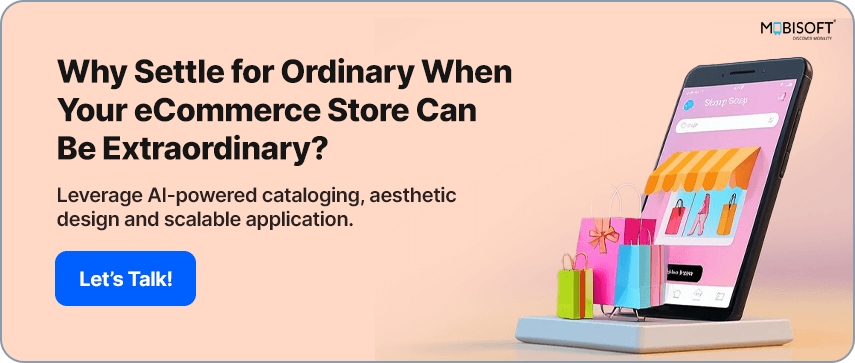

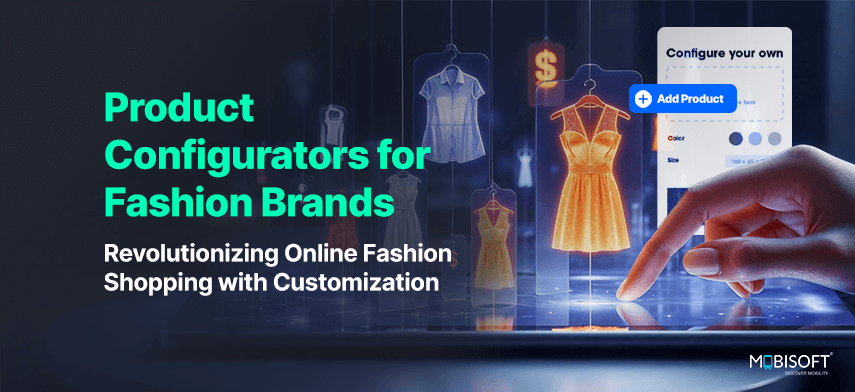


 April 18, 2025
April 18, 2025


